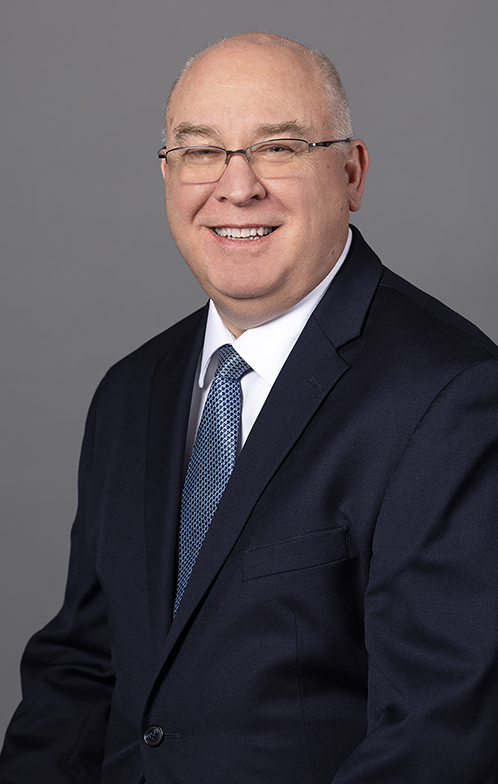
David S. Alexander
CFP®, ChFC®
Senior Wealth Advisor

Senior Wealth Advisor
Are you interested in moving your finances in a different direction in 2023? If so, it is time to plan your trip. And like all trips, your financial journey will benefit from a clear understanding of your destination, a good map, and the right vehicle(s) to get you there.
When you travel, having a map is essential to plan the best route. It is no different when you are planning for your financial future.
To draft your financial map, start by defining your financial goals from a short-term, intermediate, and long-term perspective. For most individuals, common goals include building a retirement that maintains your lifestyle, funding education for children or grandchildren, planning for a major purchase, and leaving a legacy to family and charities. Your circumstances will be unique but investing the time to define what is important will result in a better journey.
Your financial advisor is a valuable resource in developing your map and advising on when you may need a change of course. Ideally, he or she will be a financial guide who coordinates with your other advisors to help you execute your financial plan.
Cash is what fuels your goals. A good tune-up can improve your financial mileage.
Most people realize that they can free up additional cash for goals by spending less on discretionary expenses. Common potholes in the road are dining out too much, extravagant purchases of goods and services, and the detour of excess debt.
When budgeting, consider the following:
If you are in a higher tax bracket and have significant positive cash flow, consider these ideas to reduce taxes and fund your goals:
If retirement is on the horizon, test drive your retirement budget. An often-quoted rule of thumb is that you will need 80% of your current annual income for retirement. Preview your retirement lifestyle by spending 15-20% less a month (save the difference) for several months. This exercise clarifies what expenses are needed versus discretionary and highlights other bumps in the road like excess debt or unproductive assets that should be addressed before retirement.
Having a handle on your net worth can help you steer toward your financial goals with confidence. After budgeting, determine your net worth. A net worth statement (aka personal financial statement or PFS) reflects assets minus liabilities at a given point in time. List all your assets and liabilities and calculate the difference. After you arrive at that number, ask yourself the following questions.
If your employer provides a defined contribution plan (e.g., 401k, 403b, etc.), make sure you contribute enough at a minimum to receive employer matching funds. As your income grows, increase your contributions to target 15% of annual income or the IRS maximum of $22,500 (2023).
If you are age 50, an additional $7,500 (2023) can be contributed under the “catch-up” provisions. With IRAs, the annual contribution limits are $6,500 with an additional $1,000 “catch up” for those over age 50. Remember, deductible and Roth IRA contribution amounts can be reduced based on your modified adjusted gross income.
Investment accounts can be tax deferred (e.g., 401k, Traditional IRA), tax free (Roth 401k and IRA), or taxable (non-qualified). In a tax-deferred account, withdrawals are generally taxed as ordinary income. Withdrawals from tax-free accounts, (Roth IRA/Roth 401k) are free from income tax if you meet the five-year holding period and are older than age 59 ½. Lastly, gains on withdrawals from taxable accounts are taxed at favorable long-term capital gains rates if you have held the investment longer than 12 months. Funding all three types of accounts provides flexibility—allowing you the choice of what tax buckets to use and greater control of potential taxes along the way.
As an investor, you are concerned about portfolio performance and advisory fees. While it is not uncommon to own investment accounts across multiple providers, this can cloud your efforts to evaluate portfolio risk and investment performance. Furthermore, accounts with multiple providers may increase overall management fees. Evaluate whether you can reduce fees by consolidating accounts. Equally important are the internal costs of mutual funds and other investments. These expenses can have a significant impact on portfolio return over time. Reducing those expenses can improve net performance.
You should maintain a cash account equal to 3 to 6 months of personal expenses to address unexpected budget items. This account will help you avoid incurring additional debt or tapping into funds meant for other goals.
Once you map out your financial destination, consider how your financial plan affects your family, your church, charities, and causes of importance to you. These considerations fall under your estate plan, which should also be part of your map.
We encourage you to confer with your wealth advisor about these and other strategies to help you achieve your goals in 2023.
1 Please see our November 2022 Insights piece on “Gifting Strategies in a Challenging Market” for more details.
2 Please see our June 2022 Insights piece on “Wealth Building Strategies to Consider in Down Markets” for more details.
DISCLAIMER: The views and strategies described in the piece may not be suitable to all readers and are subject to change without notice. The information is not intended to provide and should not be relied on for accounting, legal, and tax advice or investment recommendations. Investing in stocks involves risk, including loss of principal. Past performance is not a guarantee of future results.